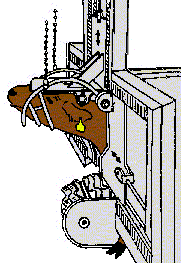Recommended Ritual Slaughter Practices
To
Improve Animal Welfare
And Employee Safety

Safety Tips for Workers
- Shackling and hoisting large cattle and calves can be very
dangerous. It has caused many serious accidents such as loss
of an eye, permanent knee damage and head injuries from kicking and
falling shackles. In one plant, replacement of the shackle
hoist with a restrainer resulted in a 500 percent reduction in
accidents. Shackling and hoisting of live sheep is also
hazardous. There have been several incidents of teeth knocked
out.
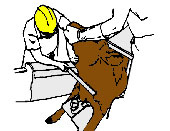
- Center track restrainer being used for ritual slaughter.
The animal is being restrained in a very humane manner, comfortably
upright. A person can hold the head of calves and sheep. For adult
cattle, a mechanical head holding device is used.
- There are humane options to shackling and hoisting
animals.
-
Conveyor systems with headholder chin lifts provide a calmer
animal, and a safer environment for workers.
- The ASPCA pen is another
humane option available for humane ritual slaughter.
CONVEYOR SYSTEMS

To induce the cattle to stay still and ride quietly, the solid hold
down rack MUST be long enough so that the animal entering the
restrainer can NOT see out until it's feet are completely off the
enterance
ramp.
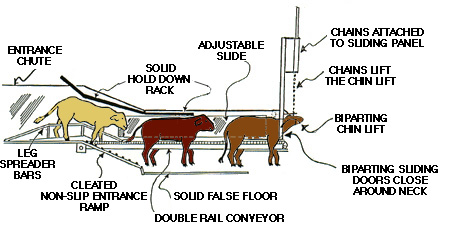
Detail showing double rail restrainer and chin lift.
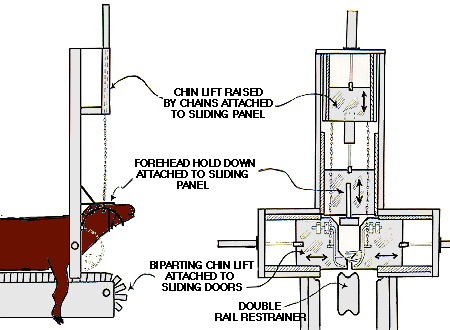

- Headholder for the double rail restrainer.
Another humane option for ritual slaughter. This device holds the
animals head comfortably and allows a Rabbi to perform
the Kosher cut with the animal quietly restrained.

Cow's eye view of the head holding device for ritual slaughter
on the center track double rail restrainer.
ASPCA PEN

- Upright kosher restraint box
Side view illustrating the
proper cattle position for restraint.
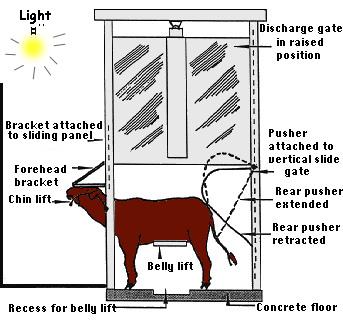
This drawing illustrates (on the left side, in front of the
animal) the solid barrier that is necessary to block the animal's
vision.
The sides of the ASPCA box must also be completely
solid

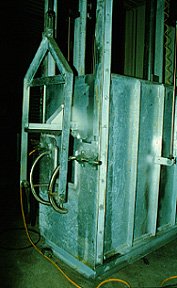
Restraining box with headholder for ritual slaughter holds the
animal in an upright position.







